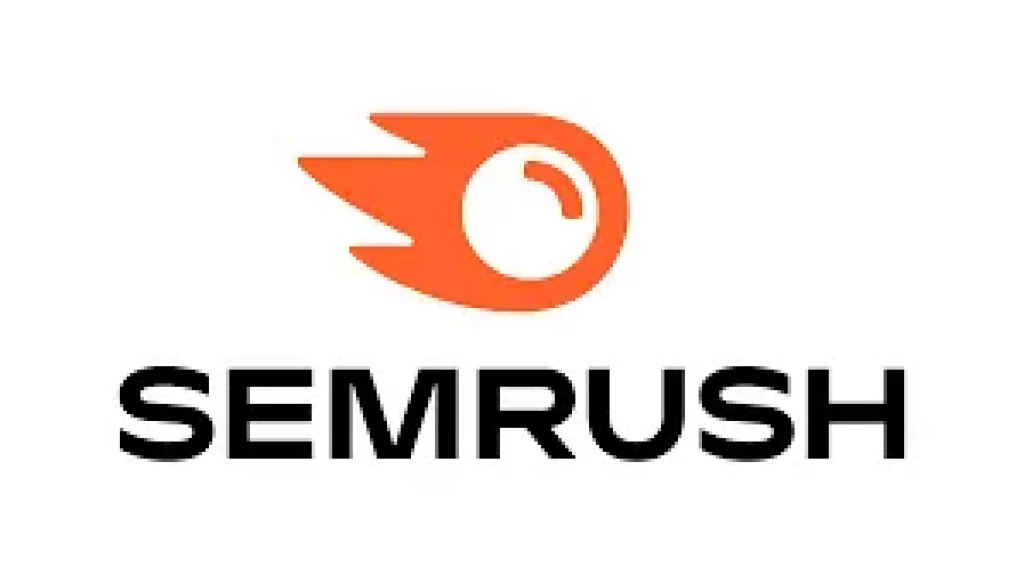Having an online presence is no longer just a luxury – it's a necessity. With billions of people turning to search engines like Google to find products, services, and information, businesses that fail to leverage search engine marketing (SEM) risk being left behind. But what exactly is SEM, and how can it transform your brand?
SEM is the practice of using paid advertising strategies to increase your visibility on search engine results pages (SERPs). By bidding on relevant keywords and creating compelling ads, you can ensure that your brand appears at the top of the search results when potential customers are actively looking for what you offer. It's a powerful way to drive targeted traffic to your website, boost brand awareness, and ultimately, increase sales and revenue.
Getting the benefits of SEM and how to implement it effectively can upscale your game to the next level.
What is Search Engine Marketing?

Search Engine Marketing (SEM) is a digital marketing strategy that involves promoting websites by increasing their visibility on search engine results pages (SERPs) through paid advertising. It allows businesses to display ads at the top or alongside organic search results when users search for specific keywords related to their products or services. SEM typically involves pay-per-click (PPC) advertising models, where advertisers bid on relevant keywords and pay a fee each time their ad is clicked.
Search Engine Optimization Vs Search Engine Marketing

Alright, let's break it down. Search Engine Marketing (SEM) and Search Engine Optimization (SEO) are like the Batman and Robin of digital marketing. They both aim to get your website noticed, but they go about it in different ways.
SEO is all about playing the long game. It's the art of making your website irresistible to search engines without spending a dime on ads. Think of it as sprucing up your site’s content, structure, and backlinks so it climbs higher on search engine results pages (SERPs). It's a budget-friendly way to build trust and credibility with your audience.
SEM, on the other hand, is like SEO's flashy cousin. It includes both SEO and paid advertising. This means you're not just relying on organic methods but also throwing in some cash for ads like Google Ads and Microsoft Ads. SEM is all about getting quick visibility by targeting specific keywords and audiences who are ready to buy.
Is SEM Really Worth It?
There are quite a few reasons that make SEM a good choice among marketers, let's quickly have a look at them:
Instant Spotlight: Unlike SEO, which can take a while to show results, SEM puts you right in the spotlight with paid ads. This means more eyeballs on your site, pronto.
Laser-Focused Ads: SEM lets you zero in on specific keywords and audiences. Your ads will pop up for folks who are already searching for what you offer.
Boost Your Brand: Showing up at the top of search results does wonders for your brand’s credibility. People are more likely to click on your site if it’s front and center.
Trackable Success: SEM gives you the lowdown on how your ads are doing. You can keep tabs on metrics like click-through rate (CTR), conversion rate, and return on investment (ROI) to tweak your campaigns for the best results.
Bang for Your Buck: While SEM involves spending money, it can be a smart investment. You can set your budget and bid on keywords that match your goals, making sure you get the most out of your ad spend.
Semrush for SEM & SEO Analysis

Semrush is widely recognized as one of the best tools for both SEM and SEO analysis, offering a platform that serves all your digital marketing needs. With its complete suite of features, Semrush allows you to conduct in-depth keyword research, track your search engine rankings, and analyze your competitors' strategies.
For SEM, it provides valuable insights into ad campaigns, including keyword bidding, ad copy analysis, and performance tracking. On the SEO front, Semrush excels with site audits, backlink analysis, and content optimization tools. Its intuitive interface and real-time data make it an indispensable resource for marketers aiming to enhance their online visibility and drive targeted traffic.
SEM Key Metrics
Keeping an eye on key metrics is pretty crucial when it comes to any search engine marketing campaign. These numbers give you the lowdown on how well your strategies are working and guide you in making smart decisions.
1. Tracking Keyword Rankings
Keyword rankings are like the report card for your SEO efforts. Landing on the first page of search results is prime real estate for grabbing organic traffic. Tools like SEMRush are your best friends here, helping you keep tabs on how your keywords are doing over time. Regularly checking these rankings lets you tweak your strategies to boost your search engine visibility.
2. Analyzing Organic Traffic
Organic traffic is the crowd that finds you through search engines. It's a big deal because it shows how well your SEO is working. Knowing where your visitors are coming from, like which search engines and locations, helps you zero in on specific traffic sources for better results.
| Metric | Description |
|---|---|
| Organic Traffic | Number of visitors from search engines |
| Source | Specific search engines used |
| Geographic Location | Location of visitors |
3. Evaluating Time Spent on Page
Time spent on the page tells you if people are digging your content. More time usually means your content is hitting the mark. Creating stuff that's both educational and engaging can keep visitors around longer, boosting your SEO game.
| Metric | Description |
|---|---|
| Time Spent on Page | Duration visitors stay on a webpage |
| Bounce Rate | Percentage of visitors leaving after viewing one page |
| Engagement Rate | Interaction level with the content |
4. Measuring Click-Through Rate (CTR)
Click-through rate (CTR) shows how many folks click on your site after spotting it in search results. A higher CTR usually means your keywords and meta descriptions are on point. Keeping an eye on CTR and making tweaks can lead to better performance and more conversions.
| Metric | Description |
|---|---|
| Click-Through Rate (CTR) | Percentage of users clicking on search results |
| Impressions | Number of times the website appears in search results |
| Clicks | Number of times users click on the website link |
Keeping tabs on these key metrics, you can fine-tune your search engine marketing strategies for better results and a higher return on investment.
No-Nonsense Guide For Winning at SEM
Search engine marketing (SEM) is a powerful tool for businesses to reach their target audience and drive conversions. However, success in SEM requires a well-planned and executed strategy. Here are some key points to help you win at SEM:
1. Keyword Research
Conduct thorough keyword research to identify the most relevant and high-performing keywords for your business. Use tools like Google Keyword Planner, SEMrush, or Ahrefs to find keywords with high search volume and low competition.
2. Compelling Ad Copy
Craft compelling ad copy that resonates with your target audience and entices them to click on your ads. Use persuasive language, highlight unique selling points, and include a clear call to action.
3. Landing Page Optimization
Ensure your landing pages are optimized for conversion by providing a seamless user experience, a clear value proposition, and a strong call to action. Test different elements, such as headlines, images, and forms, to improve conversion rates.
4. Bid Management
Implement effective bid management strategies to maximize your return on investment (ROI). Use techniques like bid adjustments, bid automation, and bid scheduling to optimize your bids based on performance data and target the most valuable traffic.
5. Continuous Monitoring and Optimization
Regularly monitor your SEM campaigns and analyze performance metrics, such as click-through rates (CTR), conversion rates, and cost-per-acquisition (CPA). Use this data to identify areas for improvement and continuously optimize your campaigns for better results.
Boosting ROI in SEM
Return on Investment (ROI) is a crucial metric for evaluating the effectiveness of any marketing campaign, including Search Engine Marketing (SEM). In the context of SEM, ROI measures the profitability of your paid search efforts by comparing the revenue generated from SEM campaigns against the costs incurred. The formula to calculate the ROI of SEM is:
ROI = (Revenue from SEM – Cost of SEM) / Cost of SEM x 100%
Here's a breakdown of the components:
- Revenue from SEM: This is the total revenue (sales, leads, or any other conversion value) generated directly from your SEM campaigns during a specific period.
- Cost of SEM: This includes all the expenses associated with running your SEM campaigns, such as ad spend, agency fees (if applicable), tool subscriptions, and any other related costs.
Plugging in these values, you can calculate the percentage return on your SEM investment. A positive ROI indicates that your campaigns are profitable, while a negative ROI suggests that you're spending more than you're earning from SEM.
ROAS: Your Ad Spend Buddy
While Return on Investment (ROI) is a valuable metric for evaluating the profitability of SEM campaigns, another important metric to consider is Return on Ad Spend (ROAS). ROAS specifically measures the revenue generated for every dollar spent on advertising, providing a more focused view of the direct impact of your ad spend. The formula to calculate ROAS for SEM campaigns is:
ROAS = (Revenue from SEM Campaigns/Total Ad Spend) x 100%
Here's what each component represents:
- Revenue from SEM Campaigns: This is the total revenue (sales, leads, or any other conversion value) generated directly from your SEM campaigns during a specific period.
- Total Ad Spend: This is the total amount of money you've invested in your SEM campaigns, including costs for clicks, impressions, and any other advertising fees.
ROAS is typically expressed as a ratio or percentage. For example, a ROAS of 4:1 or 400% means that for every $1 spent on SEM advertising, you generated $4 in revenue.
Quenching Common Questions Related to SEM
How Does SEM Differ from SEO?
SEM focuses on paid advertising, while SEO (Search Engine Optimization) involves optimizing content and websites to rank higher in organic search results.
What are the Main Types of SEM?
The primary types of SEM are pay-per-click (PPC) advertising, display advertising, and remarketing campaigns.
How do I Create Compelling SEM Ads?
Use persuasive language, highlight unique selling points, include a clear call-to-action, and ensure your ads are relevant to the searched keywords.
How do I Measure the Success of My SEM Campaigns?
Track metrics like click-through rates (CTR), conversion rates, cost-per-acquisition (CPA), return on investment (ROI), and return on ad spend (ROAS).
How Often Should I Optimize My SEM Campaigns?
Continuously monitor and optimize your SEM campaigns based on performance data to improve results and maximize your return on investment.
Max ROI With SEM
Search Engine Marketing (SEM) is a powerful tool that can significantly transform your brand's online presence and drive substantial growth. By strategically utilizing paid search advertising, you can reach your target audience precisely when they are searching for your products or services.
From conducting thorough keyword research to crafting compelling ads and optimizing landing pages, every step in your SEM strategy plays a crucial role in achieving success. Remember to continuously monitor and refine your campaigns to maximize ROI and ROAS.
So ready to get started? Your next customer is just a click away!




![Article Forge Vs. Copymatic: Battle for AI Writing Tool [2024 Review & Pricing] 7 Article Forge Vs. Copymatic: Battle for AI Writing Tool [2024 Review & Pricing]](https://aff.ninja/wp-content/uploads/2022/06/Articleforge-Vs.-Copymatic-768x384.webp)


